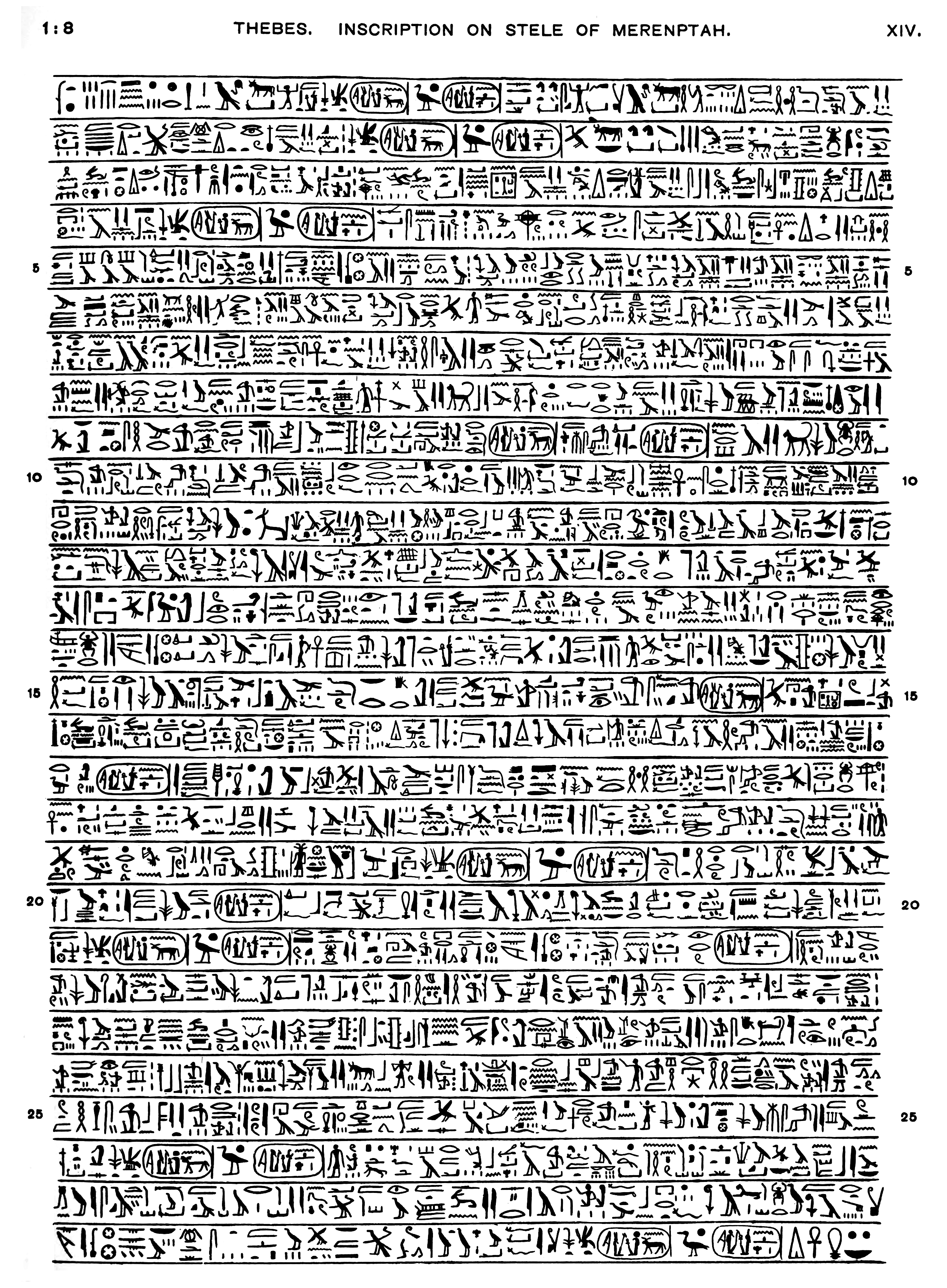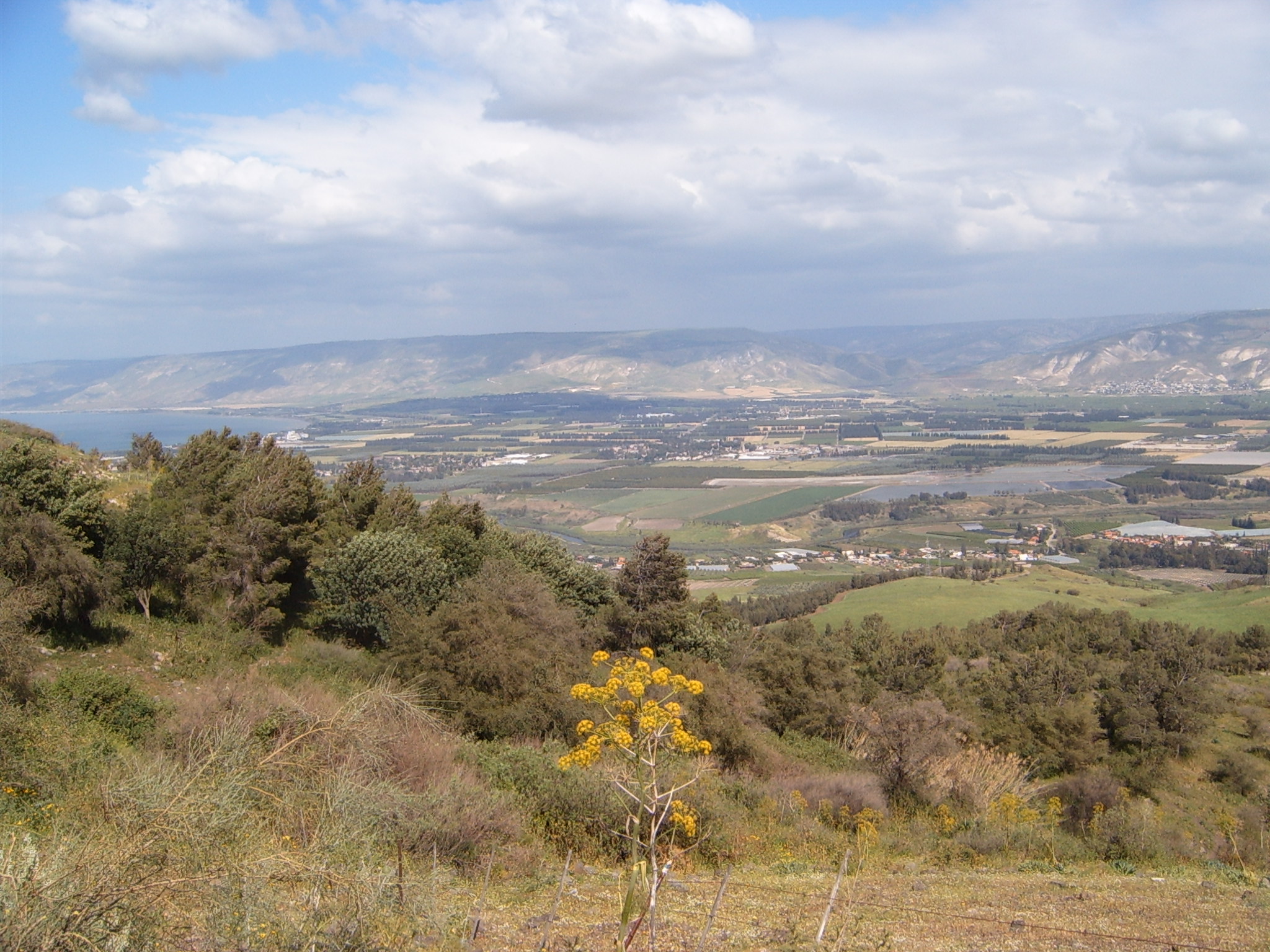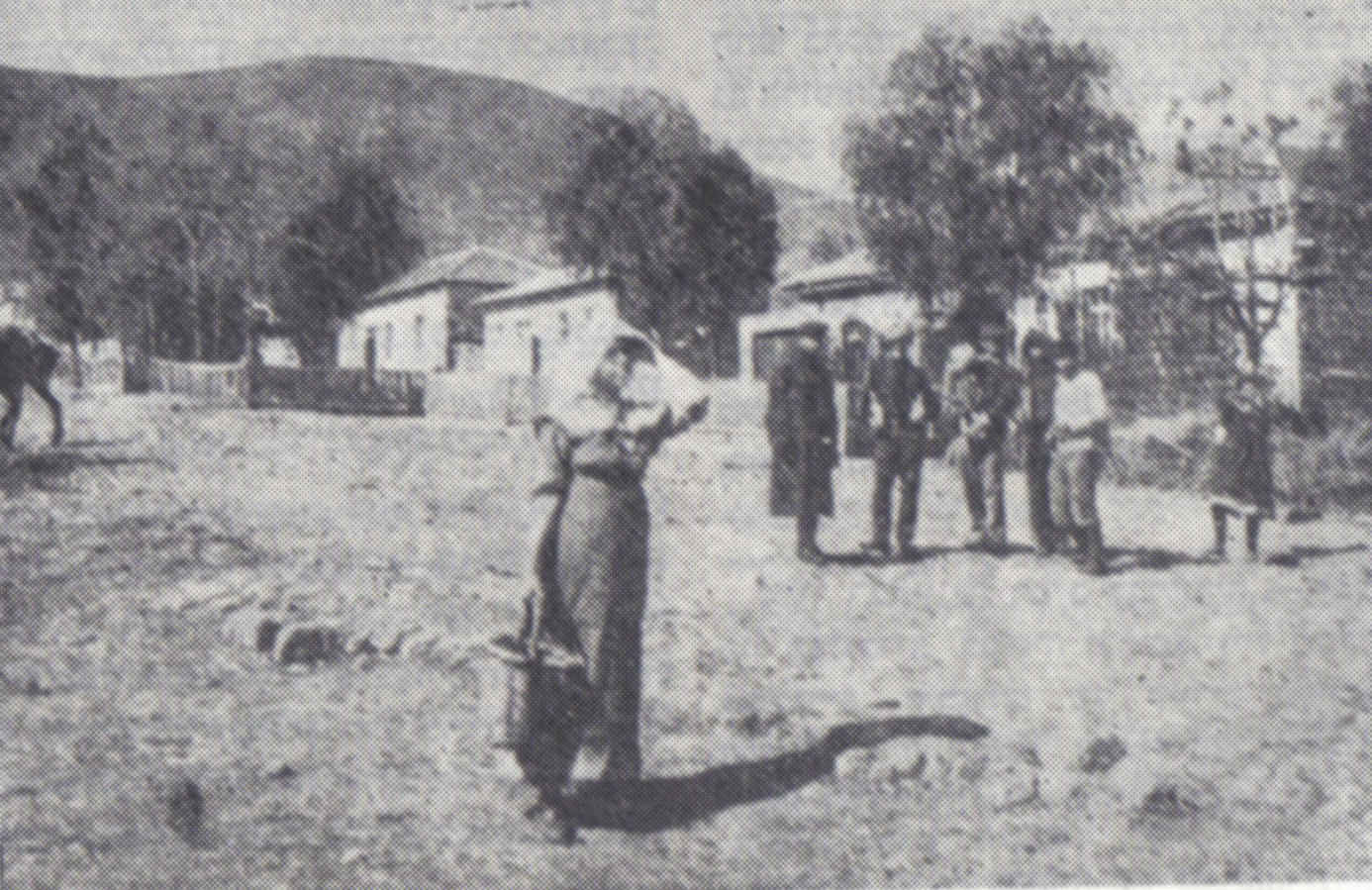|
Yenoam
Yenoam (or Yanoam; ) is a place in ancient Canaan, or in Syria, known from Ancient Egyptian regnal sources, of the time of Thutmose III to Ramesses III. One such source is a stela of Seti I found in Beit She'an. Another is the Merneptah Stele. The location of Yenoam is a matter of speculation. Suggested sites include: *Tell Shihab in Yarmouk River valley in southern Syria, *Tell Na'ama (Na'ameh) in Hula Valley, *Tell Na'am (en-Naam) near Yavne'el, and * Tell Ovadya (Ubeidiya) in the Jordan Valley The Jordan Valley ( ar, غور الأردن, ''Ghor al-Urdun''; he, עֵמֶק הַיַרְדֵּן, ''Emek HaYarden'') forms part of the larger Jordan Rift Valley. Unlike most other river valleys, the term "Jordan Valley" often applies just to .... (Reprinted in ) It has been tentatively associated with the biblical city of Janoah (''ynwḥ''). References Mohamed Raafat Abbas, “The Town of Yenoam in the Ramesside War Scenes and Texts of Karnak”, Cahiers de Karnak 16 (20 ... [...More Info...] [...Related Items...] OR: [Wikipedia] [Google] [Baidu] |
Seti I
Menmaatre Seti I (or Sethos I in Greek) was the second pharaoh of the Nineteenth Dynasty of Egypt during the New Kingdom period, ruling c.1294 or 1290 BC to 1279 BC. He was the son of Ramesses I and Sitre, and the father of Ramesses II. The name 'Seti' means "of Set", which indicates that he was consecrated to the god Set (also termed "Sutekh" or "Seth"). As with most pharaohs, Seti had several names. Upon his ascension, he took the prenomen "mn-m3't-r' ", usually vocalized in Egyptian as ''Menmaatre (''Established is the Justice of Re). His better known nomen, or birth name, is transliterated as "''sty mry-n-ptḥ"'' or ''Sety Merenptah'', meaning "Man of Set, beloved of Ptah". Manetho incorrectly considered him to be the founder of the 19th Dynasty, and gave him a reign length of 55 years, though no evidence has ever been found for so long a reign. Reign After the enormous social upheavals generated by Akhenaten's religious reform, Horemheb, Ramesses I and Seti I's ... [...More Info...] [...Related Items...] OR: [Wikipedia] [Google] [Baidu] |
Tell Shihab
Tell Shihab ( ar, تل شهاب; also spelled Tell esh-Shihab or Tal Shehab) is a village in southern Syria, administratively part of the Daraa Governorate, located northwest of Daraa on the Jordan-Syria border. Nearby localities include al-Shaykh Saad and Nawa to the north, Muzayrib, Da'el and Tafas to the northeast, and al-Yadudah to the east. According to the Syria Central Bureau of Statistics, Tell Shihab had a population of 9,430 in the 2004 census.General Census of Population and Housing 2004 Syria Central Bureau of Statistics (CBS). Daraa Governorate. Etymology The to ...[...More Info...] [...Related Items...] OR: [Wikipedia] [Google] [Baidu] |
Merneptah Stele
The Merneptah Stele, also known as the Israel Stele or the Victory Stele of Merneptah, is an inscription by Merneptah, a pharaoh in ancient Egypt who reigned from 1213–1203 BCE. Discovered by Flinders Petrie at Thebes in 1896, it is now housed at the Egyptian Museum in Cairo. The text is largely an account of Merneptah's victory over the ancient Libyans and their allies, but the last three of the 28 lines deal with a separate campaign in Canaan, then part of Egypt's imperial possessions. It is sometimes referred to as the "Israel Stele" because a majority of scholars translate a set of hieroglyphs in line 27 as "Israel". Alternative translations have been advanced but are not widely accepted. The stele represents the earliest textual reference to Israel and the only reference from ancient Egypt. It is one of four known inscriptions from the Iron Age that date to the time of and mention ancient Israel by name, with the others being the Mesha Stele, the Tel Dan Stele, and t ... [...More Info...] [...Related Items...] OR: [Wikipedia] [Google] [Baidu] |
Hula Valley
The Hula Valley ( he, עמק החולה, translit. ''Emek Ha-Ḥula''; also transliterated as Huleh Valley, ar, سهل الحولة) is an agricultural region in northern Israel with abundant fresh water, which used to be Lake Hula, prior to its draining. It is a major stopover for birds migrating along the Syrian-African Rift Valley between Africa, Europe, and Asia. Lake Hula and the marshland surrounding it were a breeding ground for mosquitoes carrying malaria, and so were drained in the 1950s. A small section of the valley was later re-flooded in an attempt to revive a nearly extinct ecosystem. An estimated 500 million migrating birds now pass through the Hula Valley every year. Etymology Lake Hula was historically referred to by different names. The 14th century BCE Egyptians called the lake ''Samchuna'', while the Hebrew Bible records it as ''Merom''. In the 1st century CE, the Jewish-Roman historian Flavius Josephus termed it ''Semechonitis'' ( el, Σημεχωνί� ... [...More Info...] [...Related Items...] OR: [Wikipedia] [Google] [Baidu] |
Archaeology Of Syria
Archaeology or archeology is the scientific study of human activity through the recovery and analysis of material culture. The archaeological record consists of artifacts, architecture, biofacts or ecofacts, sites, and cultural landscapes. Archaeology can be considered both a social science and a branch of the humanities. It is usually considered an independent academic discipline, but may also be classified as part of anthropology (in North America – the four-field approach), history or geography. Archaeologists study human prehistory and history, from the development of the first stone tools at Lomekwi in East Africa 3.3 million years ago up until recent decades. Archaeology is distinct from palaeontology, which is the study of fossil remains. Archaeology is particularly important for learning about prehistoric societies, for which, by definition, there are no written records. Prehistory includes over 99% of the human past, from the Paleolithic until the advent of ... [...More Info...] [...Related Items...] OR: [Wikipedia] [Google] [Baidu] |
Archaeology Of Israel
The archaeology of Israel is the study of the archaeology of the present-day Israel, stretching from prehistory through three millennia of documented history. The ancient Land of Israel was a geographical bridge between the political and cultural centers of Mesopotamia and Egypt. Despite the importance of the country to three major religions, serious archaeological research only began in the 15th century.''Encyclopedia of Zionism and Israel'', edited by Raphael Patai, Herzl Press and McGraw-Hill, New York, 1971, vol. I, pp. 66–71 Although he never travelled to the Levant, or even left the Netherlands, the first major work on the antiquities of Israel is considered to be Adriaan Reland's ''Antiquitates Sacrae veterum Hebraeorum,'' published in 1708. Edward Robinson, an American theologian who visited the country in 1838, published its first topographical studies. Lady Hester Stanhope performed the first modern excavation at Ashkelon in 1815. A Frenchman, Louis Felicien de Sau ... [...More Info...] [...Related Items...] OR: [Wikipedia] [Google] [Baidu] |
Janohah
Janoah or Janohah ( ''Yānōwaḥ'') is the name of one or more places mentioned in the Bible. Etymology Janohah means "he rests" in Hebrew. Places in the Bible The Book of Joshua (), places a Janohah on the northern border of the Tribe of Ephraim: "the border went about eastward unto Taanathshiloh, and passed by it on the east to Janohah; And it went down from Janohah to Ataroth". The site of Janohah is thought by some to be at Yanun or nearby Khirbet Yanun, but this is disputed. A Janohah is also mentioned in the Second Book of Kings (): "came Tiglath-Pileser I king of Assyria, and took Ijon, and Abel-beth-maachah, and Janoah, and Kedesh, and Hazor, and Gilead, and Galilee, all the land of Naphtali According to the Book of Genesis, Naphtali (; ) was the last of the two sons of Jacob and Bilhah (Jacob's sixth son). He was the founder of the Israelite Tribe of Naphtali. Some biblical commentators have suggested that the name ''Naphtali'' ma ..., and carried them captive to ... [...More Info...] [...Related Items...] OR: [Wikipedia] [Google] [Baidu] |
Jordan Valley (Middle East)
The Jordan Valley ( ar, غور الأردن, ''Ghor al-Urdun''; he, עֵמֶק הַיַרְדֵּן, ''Emek HaYarden'') forms part of the larger Jordan Rift Valley. Unlike most other river valleys, the term "Jordan Valley" often applies just to the lower course of the Jordan River, from the spot where it exits the Sea of Galilee in the north, to the end of its course where it flows into the Dead Sea in the south. In a wider sense, the term may also cover the Dead Sea basin and the Arabah valley, which is the rift valley segment beyond the Dead Sea and ending at Aqaba/Eilat, farther south. The valley, in the common, narrow sense, is a long and narrow trough, long if measured " as the crow flies", with a width averaging with some points narrowing to over most of the course, before widening out to a delta when reaching the Dead Sea. Due to meandering, the length of the river itself is . This is the valley with the lowest elevation in the world, beginning at below sea level ... [...More Info...] [...Related Items...] OR: [Wikipedia] [Google] [Baidu] |
Ubeidiya, Tiberias
Al-'Ubaydiyya ( ar, العبيدية) was a Palestinian Arab village in the Tiberias Subdistrict. It was depopulated during the 1947–1948 Civil War in Mandatory Palestine on March 3, 1948. It was located 11 km south of Tiberias, situated close to the Jordan River. Today the site is a desolate hill named Tel Ubeidiya. History Ottoman period It was mentioned in the Ottoman defter for the year 1555-6, as ''Mezraa'' land, (that is, cultivated land), located in the ''Nahiya'' of Tabariyya of the '' Liwa'' of Safad. The land was designated as ''Sahi'' land, that is, land belonging to the Sultan. Pierre Jacotin called the village ''Abadieh'' on his map from 1799. In 1838 Robinson's ''Biblical Researches in Palestine'' noted it as a Muslim village, ''el-'Öbeidiyeh'', in the Tiberias District, located south of lake Tiberias. In 1881, the PEF's ''Survey of Western Palestine'' described ''El Abeidiyeh'': "Stone and mud houses, built on a round tell, close to the Jorda ... [...More Info...] [...Related Items...] OR: [Wikipedia] [Google] [Baidu] |
Yavne'el
Yavne'el ( he, יַבְנְאֵל, ar, يفنيئيل) is a moshava and local council in the Northern District of Israel. Founded in 1901, it is one of the oldest rural Jewish communities in the country. According to the Israel Central Bureau of Statistics (CBS), in it had a population of . In 2008 the population had been of 3,100, with a growth rate of 1.4%. History Archaeological overview Remains from the Late Bronze Age,Leibowitz 1995, cited in Hanna, 2017 Yavne’el/ref>Brink, van den, 2017 Yavne’el, Tel Yin’am/ref> Iron Age I–II, Persian, Hellenistic, Roman, late Byzantine,Hanna, 2009Yavne’el/ref> early MuslimHanna, 2017 Yavne’el/ref> and Mamluk periods have been found here. A residential building constructed in the Umayyad period that continued to be inhabited during the Abbasid period (eighth–tenth centuries CE) has been excavated here. Remains from the Mamluk period have also been found. Ottoman period Arab village During the Ottoman period the Muslim ... [...More Info...] [...Related Items...] OR: [Wikipedia] [Google] [Baidu] |
Canaan
Canaan (; Phoenician: 𐤊𐤍𐤏𐤍 – ; he, כְּנַעַן – , in pausa – ; grc-bib, Χανααν – ;The current scholarly edition of the Greek Old Testament spells the word without any accents, cf. Septuaginta : id est Vetus Testamentum graece iuxta LXX interpretes. 2. ed. / recogn. et emendavit Robert Hanhart. Stuttgart : Dt. Bibelges., 2006 . However, in modern Greek the accentuation is , while the current (28th) scholarly edition of the New Testament has . ar, كَنْعَانُ – ) was a Semitic-speaking civilization and region in the Ancient Near East during the late 2nd millennium BC. Canaan had significant geopolitical importance in the Late Bronze Age Amarna Period (14th century BC) as the area where the spheres of interest of the Egyptian, Hittite, Mitanni and Assyrian Empires converged or overlapped. Much of present-day knowledge about Canaan stems from archaeological excavation in this area at sites such as Tel Hazor, Tel Megiddo, En Esur ... [...More Info...] [...Related Items...] OR: [Wikipedia] [Google] [Baidu] |
Yarmouk River
The Yarmuk River ( ar, نهر اليرموك, translit=Nahr al-Yarmūk, ; Greek: Ἱερομύκης, ; la, Hieromyces or ''Heromicas''; sometimes spelled Yarmouk), is the largest tributary of the Jordan River. It runs in Jordan, Syria and Israel, and drains much of the Hauran plateau. Its main tributaries are the wadis of 'Allan and Ruqqad from the north, Ehreir and Zeizun from the east. Although it is narrow and shallow throughout its course, at its mouth it is nearly as wide as the Jordan, measuring thirty feet in breadth and five in depth. The once celebrated Matthew Bridge used to cross the Yarmuk at its confluence with the Jordan. History Yarmuk forms a natural border between the plains to the north - Hauran, Bashan and Golan - and the Gilead mountains to the south. Thus it has often served as boundary line between political entities. Neolithic The Yarmukian is a Pottery Neolithic culture that inhabited parts of Palestine and Jordan. Its type site is at Sha'ar HaGolan, on ... [...More Info...] [...Related Items...] OR: [Wikipedia] [Google] [Baidu] |


.jpg)



